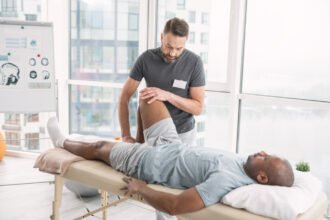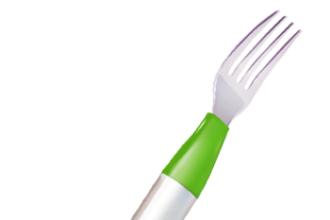
Tennis after 50? But of course! In fact your game can still get much better.

Tennis after 50? But of course! In fact your game can still get much better.
Special performance enhancement exercises are your best resource when you are working toward a specific sport or activity. We’ve got a specific exercising program or workout in our online personal trainer, but let’s just take a look at some choice exercises for the avid or aspiring tennis player.
The entire body is in use during tennis – strong, agile legs, strong arms, shoulders, chest and back for powerful strokes – it’s all important. Therefore, a total-body workout in the gym is ideal.
But, as important as all of that is, the core is vital to a great tennis match. Let’s look at core exercises. A strong core is essential to good movement, strength and conditioning and for tennis, a strong core can dramatically improve your game! Of course, ab crunches are what most people think about when they hear the term “core.”
But, a strong lower back is equally important. A strong lower-back translates into controlled leg/foot movements and strong forehand or backhand. Did that catch your attention? Great! For lower back, you can simply do reverse crunches on your stomach on the floor. Looks easy but, try a couple of sets of 12 if you’ve never done them. Where you will feel this exercise is precisely where power should originate, in your stroke. Both ab crunches and reverse crunches can be done on your floor at home or in the gym with minimal equipment. Speaking of the gym, ab benches and machines are available as well but, are not the trainer’s choice as most are designed poorly and allow or even promote poor form. Floor crunches or ball crunches are ideal.
Strong legs – if you have been in the game any time at all, you know that the power of your stroke originates in your legs – especially at the hips. Strengthening the quadriceps (front of the thigh), hamstrings (back of the thigh), calf muscles (back of the lower leg) and glutes (what you’re sitting on) can make all the difference between a bad or good game. Leg conditioning with squats, lunges and hamstring curls are key along with glute strengthening. Of course, these exercises aren’t only beneficial on the courts but also in everyday living!
Now, the upper body has to be strong enough to deliver an excellent stroke. This would incorporate arm, shoulder and back muscles that all need to work together in a seamless fashion. Hopefully, that would be one less thing to think about in the milliseconds before your racket strikes the ball!
Strong shoulders help you control your racket and possess endurance; strong range of motion in the shoulders helps with form and the follow-through. All shoulder exercises would be of benefit, depending on the health of your body but, some such as the cross-medial delt swing and windmill are ideal to strengthen the shoulder muscles that support your swing. General strengthening would come from the overhead shoulder press.
A word about the current condition of your body: if you have chronic pain or limited range of motion, the source of those should be identified and addressed first. And, especially for those of us over 50, the potential is huge for some shoulder concern. For example, if you have rotator cuff damage, the kettlebell exercises mentioned above may aggravate the condition. If you have a frozen shoulder (how are you playing tennis at all?) the exercises to address this are very different from the kettlebell examples.
A strong back may have been the last thing on your mind regarding tennis but, the upper back muscle groups (latissimus dorsi aka lats, rhomboids and trapezius, i.e., traps) – those make up the largest muscle group in the upper body. Not only does your back have to support you vertically, but in cooperation with your core, your upper back supports most activities that incorporate arm movement. That being said, the muscles on your upper back below the shoulders and covering your ribs – are really critical to your game. Some of the most tennis-beneficial exercises for your back include standing rows and standing flyes.
The chest muscles are the opposing muscle group to the back so, for muscle balance and excellent performance, your chest should be strong. In this muscle group, you can benefit from push-ups, a variety of presses and flyes – all of which would add to your game.
And, now for the muscle group for which you thought there would be a focus – arms. Well, yes, strong arms are important but, think for a moment about what has already been covered; if you work shoulders, aren’t you using your arms? If you workout your back, arms again – right? And, yes, you guessed it: when you workout your chest – arms are there too. So, are we advocating not exercising arms? No, not at all – but remember there is a balance to be considered in your workouts. You don’t want ridiculously over-developed biceps or forearms because that could affect your range of motion. Overdeveloped triceps may affect the ability to control your racket. Muscle balance is essential.
Pulling all of this together, you can also benefit from the use of resistance tubes (found at sporting goods and discount stores) for exercises that emulate your swing. Simply connect the tube to a steady surface, grasp the handle and pull on the tube in the direction of your normal swing.
Speaking of balance, now that you’ve gotten stronger, it’s time to round out your workouts with a mind-body exercise program such as yoga, Pilates or tai chi. After all, if it’s good enough for the military and the NFL, one of these forms of exercise could be pretty good for you too!
But, before you hit the court, stretch, stretch and stretch! Our tennis enhancement workout in the online personal trainer absolutely starts with stretching. Warm up with a brisk walk and stretch your legs and upper body before you hit the court. Use some gentle, controlled rotational movements at the waist and shoulders, clasp your hands together, stretch your arms in front and behind you to warm up your chest and back.
Now, that you have exercised and strengthened your muscle groups and have stretched, it’s time to have the best game of your life! Remember to draw your navel to your spine, contract your glute muscles, exhale on the stroke and you’ll have a stronger game than before. All this for a better tennis game and your 50plusPlusFitlifestyle!








